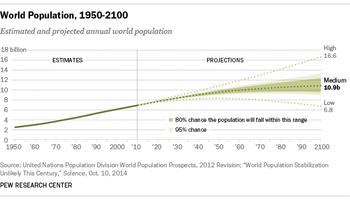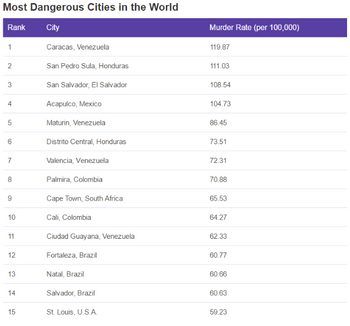Picture this. It is August in New York City and temperatures are nearing 100 degrees. You descend stairs to a subway at rush hour. The platform is packed with commuters, students, and tourists. The train arrives and people begin the challenge of maneuvering onto the train. “Stand clear of the closing doors, please, ” is announced over the address system. You, and many of those around you realize it’s going to be a tight fit for everyone to get on board. Some slight pushing, even a bit of shoving, begins around you. Voices are raised. People are visibly angry. Tensions rise. A fight breaks out as the doors close, leaving many to await the next train…when this scenario is likely to play out again.
This microcosm of human overpopulation problems demonstrates, in just a few quick minutes, what can happen when there are simply too many people in one place. In this post, we will look at the state of overpopulation issues throughout the world and Pinkerton’s Angelo Krizmanic, Vice President | Asia Pacific, who has worked many years in high-growth areas such as China and India, provides his insight.
Overpopulation problems are in the numbers
Simply put, there have never been as many people inhabiting the earth at one time as there are today. Further, there will be more each year for the foreseeable future. As this chart from the PEW Research Center indicates, the global human population could reach 16 billion in the next 90 years, while a more conservative estimate could be a still-alarming 10.9 billion:

That would mean that in the preceding 150 years leading up to 2100, the population would have increased by 14 billion/8.9 billion or 600%/445%.
The earth is a big place and could likely support that growth if the population was spread somewhat evenly throughout the globe and each person had access to life-sustaining resources. But that’s not nearly the case, as indicated by the population by city chart below:
-350.png)
In just these 15 cities alone live nearly 350 million people or nearly 5% of the earth’s total human population. And as our subway example above demonstrates, when that many people are packed together, risks and possible issues rise.
Issues and risks multiply as people do
According the PEW Research report, more than 80% of US-based American Association for the Advancement of Science members said that population growth will be both a major problem and strain on the world’s natural resources. “Everything duplicates when there are more people, ” Krizmanic agrees. “When you have 2-3-4 times as many people living in a city as were intended, changes have to happen. If they don’t, the risks rise…quickly.”
He notes that infrastructure is one of the main concerns. “A city or region has to be able to handle all the water, sewer, transportation and security issues of their population. But as has always been the case during growth, the infrastructure is in ‘catch up’ mode to try to address the increased needs of the population.”
When a region’s systems can’t handle a fast influx of people and businesses, problems occur. India is an example. As we noted in our Water and Fire Suppression Risks blog post, India is challenged in its ability to handle fires simply because access to water is at a premium. This is a direct result of the country’s rapid growth rate, with no slowing in sight. Some estimate that in five years, India will overtake China as the most populous country. The risks of limited water access issues will get worse.
Emergency services are also at risk due to overpopulated areas. “No surprise, traffic is a big issue for people living in places like Delhi (India) and Shanghai (China). But what surprised me is how difficult it is for emergency vehicles to move around. Unlike other places I’ve been, people don’t get out of the way. Quite the opposite, they jockey for position as if the emergency vehicles are the same as any other. The result is that people awaiting these services are put a much higher risk.”
More people, more crime risk?
One might assume that with more people comes a higher crime rate. As we noted in the recently released Pinkerton Risk Index Report, Japan is the 9th “safest” country in the world. Yet it has the world’s most populous city, Tokyo, which is not on the following list of cities with the highest murder rate:

In fact, none of the most populated cities are on this top 50 list. So does that mean these populated cities are safe? “In many cities with overcrowding, we see a lot more petty crimes like pickpocketing, cell phone stealing and other minor thefts,” Krizmanic says. “They don’t get reported a lot. We warn clients to be extra careful in these cities because a stolen credit card or phone can lead to identity theft and other major issues.”
Can overpopulation problems in cities be controlled?
“Yes,” says Krizmanic, “they already are. Tokyo is a great example, while Shanghai is not.” He explains that Japan’s capital has a tight control on how things move, lessening the friction and stress caused by traffic jams, long waits at airports and overcrowding in areas that might be ripe for thieves. “It also helps immensely that the people are courteous, polite and accommodating. It’s something to see. Very busy escalators routinely have people all the way to one side to allow those who want to walk to pass by. Yielding in traffic, instead of fighting for position, is the norm. They have made almost an art of getting out of people’s way on streets while still moving towards their destination. There is a calm presence that helps reduce stress and risks.
“Shanghai, on the other hand, is quite different. It’s ‘every man for himself’ and you quite literally take your life in your hand when driving there. Combine that with the fact that about 80 percent of the population are first generation drivers, and you’ve got a city full of tense situations.”
There is no easy solution to overpopulation problems. For now, expect that regions of Africa, Asia, and China will be stressed the most with cities and towns that simply cannot adequately support the growth. And that could have an effect, perhaps a major one, on the international business landscape for generations.





